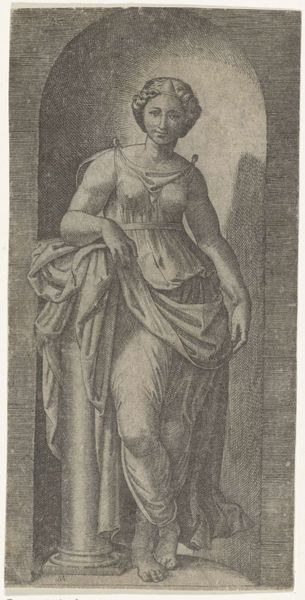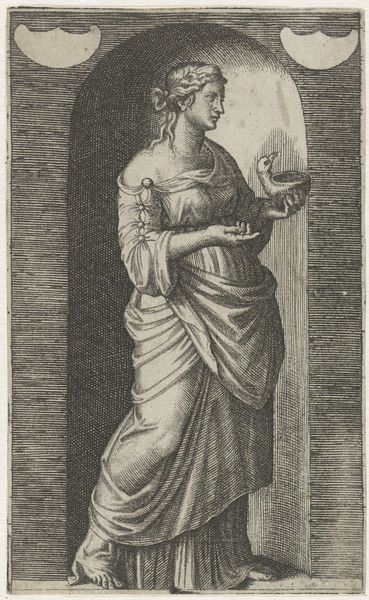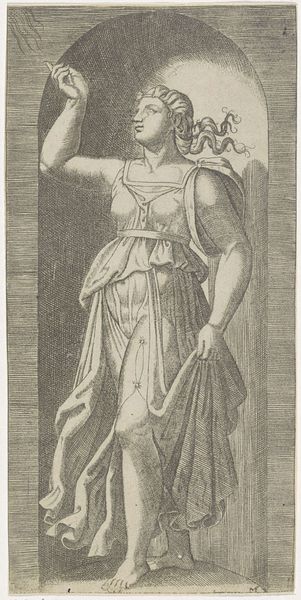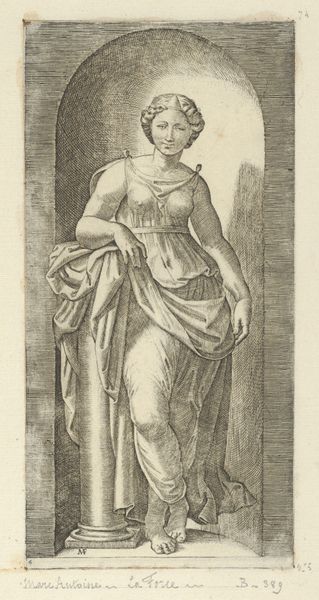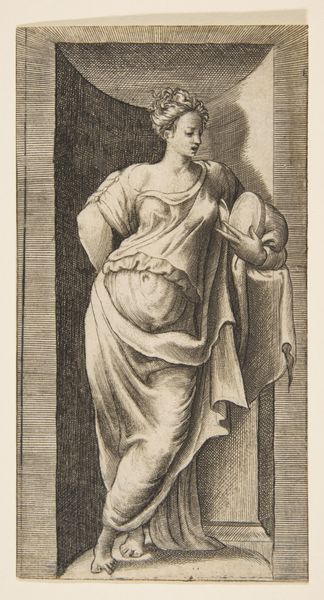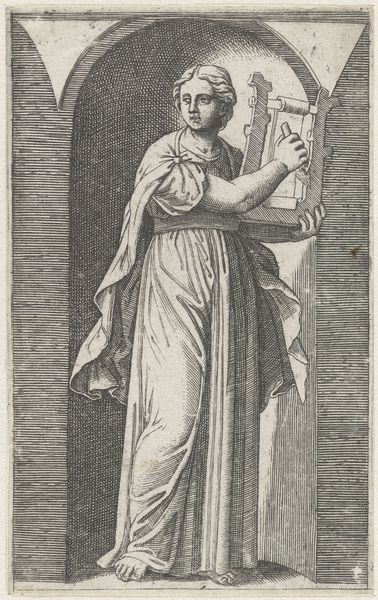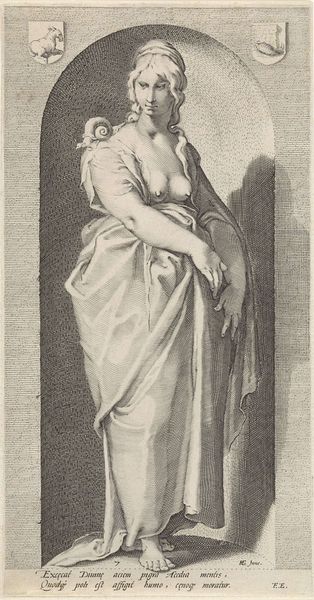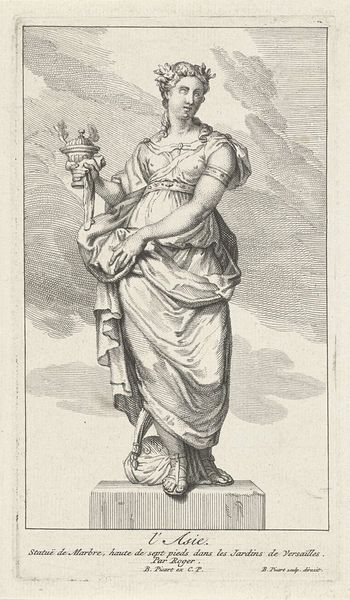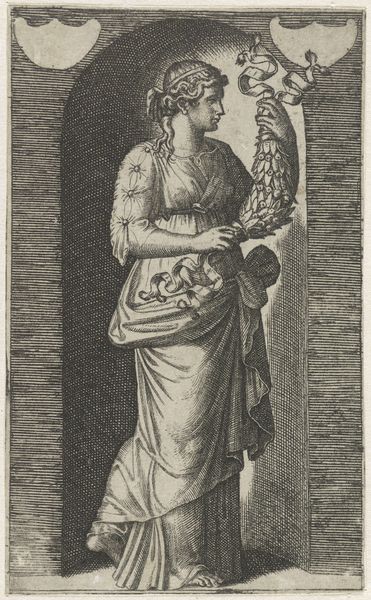
Vrouw als personificatie van Kracht (Fortitudo) leunend op zuil staand in nis 1510 - 1527
0:00
0:00
marcantonioraimondi
Rijksmuseum
engraving
#
portrait
#
allegory
#
figuration
#
history-painting
#
italian-renaissance
#
nude
#
engraving
Dimensions: height 221 mm, width 110 mm
Copyright: Rijks Museum: Open Domain
Editor: We’re looking at "Vrouw als personificatie van Kracht (Fortitudo) leunend op zuil staand in nis," or "Woman as the Personification of Strength (Fortitude) Leaning on a Column Standing in a Niche," an engraving by Marcantonio Raimondi from the early 16th century. It's striking how he conveys such a classical, almost statuesque, strength through delicate lines. What’s your take on it? Curator: This piece speaks volumes about the cultural aspirations of the Italian Renaissance. Consider that Raimondi was working during a period obsessed with rediscovering and reinterpreting classical antiquity. The "Fortitude" allegory was common; strength was highly valued in leaders and, symbolically, in the Church. What I find compelling here is the *public* consumption of this imagery. This engraving could be widely distributed. It puts classical ideals of female power into the hands of ordinary people, shaping their perception of virtue. Editor: So, its power isn't just in what it depicts, but in how it was distributed? Curator: Precisely. Printmaking democratized imagery. Before, these concepts of strength and virtue were mostly found in exclusive paintings for wealthy patrons. Engravings allowed for wider social and even political influence. Who gets to define these virtues, and for what purpose? That's the central question. Notice how the figure leans on the column, a sign of status, her bare feet adding to the sensuality, was this promoting strength as public service or idealized objecthood? Editor: It's like she’s performing power for the viewer, almost a public symbol. It reframes how I thought about engravings, not just copies but vehicles of ideology. Curator: Absolutely. Seeing art as actively shaping and reflecting its historical context makes us appreciate its significance beyond aesthetics. The engraving is no mere depiction; it is an actor within the public life of its era.
Comments
No comments
Be the first to comment and join the conversation on the ultimate creative platform.
